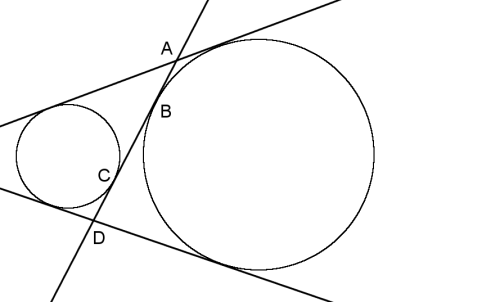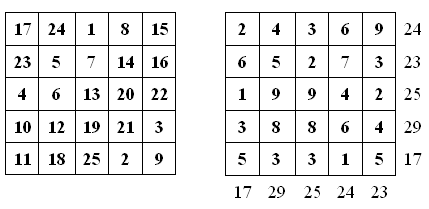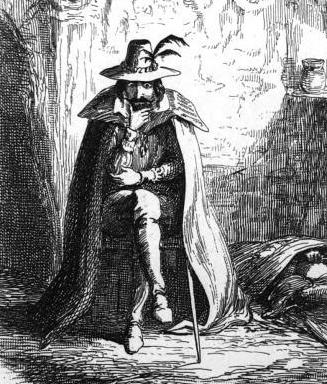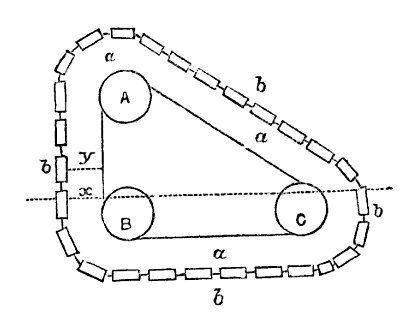
Draw two circles with three tangents as shown.
AB will always equal CD.

Draw two circles with three tangents as shown.
AB will always equal CD.
A psychologist at a girl’s college asked the members of his class to compliment any girl wearing red. Within a week the cafeteria was a blaze of red. None of the girls were aware of being influenced, although they did notice that the atmosphere was more friendly. A class at the University of Minnesota is reported to have conditioned their psychology professor a week after he told them about learning without awareness. Every time he moved toward the right side of the room, they paid more attention and laughed more uproariously at his jokes, until apparently they were able to condition him right out the door.
— W. Lambert Gardiner, Psychology: A Story of a Search, 1970
Suppose that Smith and Jones have applied for a certain job. And suppose that Smith has strong evidence for the following conjunctive proposition:
(d) Jones is the man who will get the job, and Jones has ten coins in his pocket.
Smith’s evidence for (d) might be that the president of the company assured him that Jones would in the end be selected, and that he, Smith, had counted the coins in Jones’s pocket ten minutes ago. Proposition (d) entails:
(e) The man who will get the job has ten coins in his pocket.
Let us suppose that Smith sees the entailment from (d) to (e), and accepts (e) on the grounds of (d), for which he has strong evidence. In this case, Smith is clearly justified in believing that (e) is true.
But imagine, further, that unknown to Smith, he himself, not Jones, will get the job. And, also, unknown to Smith, he himself has ten coins in his pocket. Proposition (e) is then true, though proposition (d), from which Smith inferred (e), is false.
In our example, then, all of the following are true: (i) (e) is true, (ii) Smith believes that (e) is true, and (iii) Smith is justified in believing that (e) is true. But it is equally clear that Smith does not know that (e) is true; for (e) is true in virtue of the number of coins in Smith’s pocket, while Smith does not know how many coins are in Smith’s pocket, and bases his belief in (e) on a count of the coins in Jones’s pocket, whom he falsely believes to be the man who will get the job. [Does Smith know that the man who will get the job has ten coins in his pocket?]
— Edmund L. Gettier, “Is Justified True Belief Knowledge?”, Analysis, 1963
Opinion polls taken just before the 1980 election showed the Republican Ronald Reagan decisively ahead of the Democrat Jimmy Carter, with the other Republican in the race, John Anderson, a distant third. Those apprised of the poll results believed, with good reason:
— If a Republican wins the election, then if it’s not Reagan who wins it will be Anderson.
— A Republican will win the election.Yet they did not have reason to believe
— If it’s not Reagan who wins, it will be Anderson.
— Vann McGee, “A Counterexample to Modus Ponens,” Journal of Philosophy, September 1985

This curiosity was discovered by T.E. Lobeck. The square on the left is a conventional magic square — each row, column, and long diagonal totals 65. Replacing each number with the corresponding digit of pi (for example, replacing 17 with the 17th digit of pi, which is 2) yields the square on the right, in which the rows and columns yield equivalent sums.

Suppose [a] man who underwent [a] radical change of character — let us call him Charles — claimed, when he woke up, to remember witnessing certain events and doing certain actions which earlier he did not claim to remember, and that under questioning he could not remember witnessing other events and doing other actions which earlier he did remember. … [Suppose that] all the events he claims to have witnessed and all the actions he claims to have done point unanimously to the life-history of some one person in the past — for instance, Guy Fawkes. Not only do all Charles’ memory-claims that can be checked fit the pattern of Fawkes’ life as known to historians, but others that cannot be checked are plausible, provide explanations of unexplained facts, and so on. Are we to say that Charles is now Guy Fawkes, that Guy Fawkes has come to life again in Charles’ body, or some such thing?
— Bernard Williams, “Personal Identity and Individuation,” Proceedings of the Aristotelian Society, 1957
“If it is logically possible that Charles should undergo the changes described, then it is logically possible that some other man should simultaneously undergo the same changes: e.g., that both Charles and his brother Robert should be found in this condition. What should we say in that case? They cannot both be Guy Fawkes: if they were, Guy Fawkes would be in two places at once, which is absurd.”
The name of any integer can be transformed into a number by setting A=1, B=2, C=3, etc.: ONE = 15145, TWO = 202315, THREE = 2081855, and so on.
Because every English number name ends in D (4), E (5), L (12), N (14), O (15), R (18), T (20), X (24), or Y (25), no such transformation will produce a prime number.
But in Spanish, which uses 27 letters, both SESENTA (60) = 20520514211 and MIL SETENTA (1070) = 1391220521514211 yield primes.
(Thanks, Claudio.)
59 + 39 + 49 + 49 + 99 + 49 + 89 + 39 + 69 = 534494836

A perpetual-motion scheme by William Congreve. A, B, and C are three horizontal rollers fixed in a frame. They’re surrounded by a continuous band of sponge, a, and that’s surrounded by a chain of weights, b. Immerse the whole thing partially in a cistern. The sponge on the left will absorb water by capillary action, say from x to y; the sponge on the right will not (because the weights squeeze it out!). “The band will begin to move in the direction A B; and as it moves downwards, the accumulation of water will continue to rise, and thereby carry on a constant motion.”
From Henry Dircks, Perpetuum Mobile; or, Search for Self-Motive Power, 1861.

In 1921, chemists at Arthur D. Little Inc. reduced 100 pounds of sows’ ears to glue, converted it to gelatin, forced it into fine strands, and wove these into a purse “of the sort which ladies of great estate carried in medieval days — their gold coin in one end and their silver coin in the other.”
“We made this silk purse from a sow’s ear because we wanted to, because it might serve as an example to clients who come to us with their ambitions or their troubles, and also as a contribution to philosophy,” they reported. “Things that everybody thinks he knows only because he has learned the words that say it, are poisons to progress.”